The topics included in this list provide more information about some of the things and people described or encountered in the ship journals. The full list of topics is here in alphabetical order.
Topics
Aboriginal land management
Dr Woodforde comments in his diary entry for Wednesday 14 September on the large number of trees which have been burnt. He speculates that this is due to ‘the electric fluid’ (lightning), rather than ‘as some have said, to the burning of the bush by natives’.
Absconders
One of the hazards for ship captains on the voyage to Australia was that seafarers might desert the ship.
When seafarers joined a ship they signed the articles, a legal contract that set out their pay and conditions and bound them to complete the voyage. Seafarers who left their ship or refused to work broke the law and captains could ask police to charge them.
Burial at sea
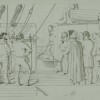
Burial at sea in the nineteenth century was necessarily a quick and practical means of disposing of bodies, but it contradicted Christian notions of a ‘good death’.
corroboree
A word from the Sydney area, in common usage by the 1830s to refer to a dance or ceremony performed by Australian Aboriginal people. The events described by non-Aboriginal people as corroborees varied by cultural group.
Crew and watches
Ships’ crews were divided into work groups called watches. There were typically two groups called the port watch and the starboard watch, named after each side of the ship.
Crew wages
When seafarers joined a ship they signed the articles, an employment contract that set out how much they would be paid, what food they would be given, and what hours they would be expected to work.
Crossing the equator
On sea voyages, the crossing of the equator is traditionally marked by a ceremony known as ‘crossing the line’. The ceremony is thought to have its origins in a Viking ritual carried out when crossing the 30th parallel.
Education on board
Literacy levels amongst passengers and crew on emigrant ships of this era varied significantly. Very few of those onboard would have attended school back in Britain.
English postal system
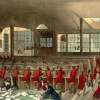
Letters to and from home were treasured by early immigrants to South Australia. In 1836 an extensive postal system already existed in Britain, although it was still too costly for most to use.
Food on board
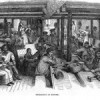
Perhaps nothing was more important to the contentment of migrants on board ships bound for South Australia than the regular and ample supply of good food, prepared well.
French navigator
The French expedition led by Nicolas Baudin visited Kangaroo Island in January 1803
German immigrants
Angas was active in promoting migration to South Australia to a group of German Lutheran dissenters led by Pastor Kavel.
Hygiene and infants
Of all passengers, infants were the most vulnerable. Infant mortality was high at this time in any case, but on board ship infants were known to be particularly at risk. Much depended on the overall health of the mother and her capacity to breast feed her infant.
Hygiene on board
Keeping clean was a significant challenge on board any emigrant ship in the early nineteenth century. It was difficult enough for cabin passengers to maintain some form of order and cleanliness in the cramped accommodation allocated to them
Letters Patent
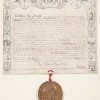
The result of a long campaign by those who wished to establish a colony according to the principles of systematic colonisation
Lighthouses
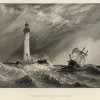
Lighthouses are navigational aids used to mark dangerous stretches of coastline, hazardous shoals and reefs, and safe entries to harbours. The first known lighthouse was built at the entrance to Egypt’s Alexandria harbour in 280 BC.
Liquor on board
In addition to water rations, early nineteenth century crew and passengers received rum, wine and small or ‘ship’ weak beer as a daily allotment. Listed provisions included hogheads or butts of hard spirits and beer and cases of wine.
Lloyds
Lloyd’s of London is the most important insurance market place in the world. Its origins date back to 1687, when Edward Lloyd opened a coffee shop in London. How did a humble coffee shop grow into the world’s leading market place for insurance?
marine specimens and artists
When the first of the nine immigrant ships were reaching South Australia, Charles Darwin was on board HMS Beagle on his famous study of the natural world that led to his theory of evolution and the publication three decades later of his book On the Origin of Species.
Mary Thomas’ poem about the killing of her cat

From Mary Thomas’ journal entry of 2 August 1836:
Who killed my cat? Suppose I tell;
Unless deceived, I know full well;
Matthew Flinders
Matthew Flinders commanded HMS Investigator and charted the coast of the continent that was then known as New Holland from April 1801 to June 1803. His expedition produced the first complete chart of the continent and the first views of the southern coast.
Mutiny
Young’s Nautical Dictionary of 1863 defined mutiny as ‘a kind of piratical revolt of seamen’. It was a vague definition. More than 150 years later The Oxford Companion to Ships and the Sea defines mutiny as ‘a resistance by force to recognized authority.
Navigation
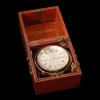
By 1836 the major problems for mariners finding their way across the oceans had been solved.
There had been great developments in exploring the earth and producing charts to guide shipping.
Parable of the Good Samaritan
The Biblical parable (moral story) of the Good Samaritan appears in the Gospel According to St Luke, chapter 10 and describes Jesus telling the story to a group of his followers. Jesus uses the parable to explain what is meant by the injunction to ‘love thy neighbour as thyself’
Personal hygiene
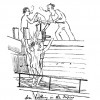
The greatest challenge all emigrants faced was access to fresh water. In fine weather there was any amount of sea water available, but fresh water was strictly limited and carefully rationed.
Pets on board
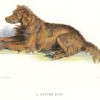
For many, starting a new life in South Australia would not be complete without the family pet. Cats and dogs provided comfort and companionship for passengers on the long journey. Cats were also useful for keeping rats and mice at bay.
Pioneer livestock for the new colony
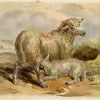
Planning and preparation were critical to establishing any new colony. South Australia’s founding fathers were well aware of the problems experienced in earlier Australian settlements
Piracy
By the 1830s, the ‘golden age’ of piracy had passed.
The power of the feared Barbary corsairs, pirates operating off the north African coast, was waning.
Portable soup
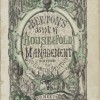
Portable soup was a method for preserving stock; it was a precursor to stock cubes. The soup was made by boiling bones and vegetables for an extraordinary amount of time until the liquid evaporated to leave a dry jelly.
Provisioning the voyage
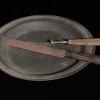
Emigrating to South Australia meant months on the ocean with limited access to outside goods. Ship masters were responsible for stocking the ships with stores for crew,
Rio de Janiero
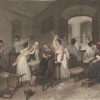
Captains sailing from Europe to Australia in the 1830s tried to avoid calling into ports. Stops cost time and they cost money for port charges and supplies. They brought the threat of disease and the possibility that crew might abscond.
ritual scarring
The making of deliberate raised scars, usually in patterns across the back, shoulders or chest, was a common practice in some regions of Aboriginal Australia. It usually marked a stage of initiation.
Robinson Crusoe
Daniel Defoe’s novel Robinson Crusoe was first published in 1719. The main character, Robinson Crusoe, is a castaway who spends 28 years on an isolated tropical island.
Royal Marines
The Royal Marines date their origins to 1664 when 1200 soldiers were recruited to a force known as the Lord Admiral’s Regiment and distributed through the fleet. Until 1755 marine regiments were formed for specific conflicts and disbanded.
Salvage at sea
When a ship founders in wild seas or runs aground, the first priority is to secure the safety of survivors. Only then does attention turn to salvaging the ship, its parts (if it has broken up) and its cargo
sea sickness
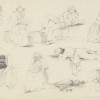
Few of the passengers aboard the ships bound for South Australia in 1836 were seasoned sailors. Seasickness was a hazard of sea voyages, even for sailors
Sea voyages
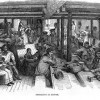
The decision to emigrate was final. For most assisted emigrants in the nineteenth century there was no prospect of returning home. Very few had travelled far from home and their journeys began with great apprehension.
Severe storms in spring 1836
While storms are common in the Channel, both the John Pirie and the Duke of York had the misfortune to be caught by a prolonged period of intense storm activity. Captain Morgan of the Duke of York noted they had six weeks of ‘contrary weather’ after leaving London on 26 February
Shipboard discipline
Ships were hierarchical. Captains had complete authority and officers looked down on their crews. Seafarers traditionally suffered from a bad reputation: they were seen as drunken, dishonest and lazy.
shipboard weddings
Charles Howard was a minister of the Church of England and authorised to officiate at weddings.
shipboard work
An able bodied seaman could practice all the skills of his trade when he could ‘hand, reef and steer’.
Shipwreck
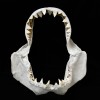
There was much for emigrants to fear in the 1830s. For almost all of them, the voyage from Britain to Australia was their first time at sea and for many it was the first time they had left home. They were sailing to an unknown coast on the other side of the world.
Signal flags
Before the advent of radio and Morse code seafarers used signal flags to communicate. The first record of British ships using signal flags comes from naval directions that were written in 1653. That system provided for five flags and only a very few directions could be signalled.
Slave trade
It would not have been unusual for ships sailing to the Australian colonies in the 1830s to encounter slave ships.
smallpox
Smallpox is an acute contagious disease caused by the variola virus. It is one of the most devastating diseases known to humans, and most of those who survived it were marked for life with deep pitted scars (pockmarks), most noticeable on the face.
South Australian Association
The South Australian Association was founded in December 1833 to promote the concepts of systematic colonisation first proposed by Edward Gibbon Wakefield and to persuade the British Government to establish a new colony in southern Australia.
South Australian Colonization Commission
The South Australian Colonization Commission was created in 1834 with authority from the British Government to raise funds through land sales
South Australian Company
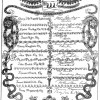
A number of wealthy British merchants, including George Fyfe Angas, formed the South Australian Company in 1835. This joint stock company was a reaction to the slow take up of land orders for the province of South Australia.
Spanish dollar
Also known as a ‘piece of eight’, this large silver coin was minted in Spain from 1497. Widely used in the Americas, Europe and the Far East, it became a form of world currency
Stations in life
Stations in life: the belief that the position in society into which you were born was ordained by God, and not to be questioned.
Surgeons and medicine
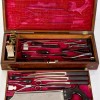
In crowded passenger ships, disease could bring disaster. The main killers were diarrhoea, measles, whooping cough and scarlet fever. The most common, minor complaints were constipation, headaches and sea sickness.
surveying
Surveying is the practice of determining the relative positions of points on the earth’s surface and showing them in a usable form, such as a map or chart. To achieve their goals, surveyors measure distances, horizontal angles, vertical angles and heights and use elements of geometry, engineering, trigonometry, mathematics and physics.
Sydney in 1836
In 1836 Sydney was a busy administrative and mercantile city, the hub of the colony of New South Wales.
The Portuguese Empire
The ships sailing for South Australia in 1836 passed the Cape Verde Islands, the Desertas, Madeira and Porto Santo – all part of the Portuguese Empire.
The Proclamation
On 28 December, Governor John Hindmarsh, accompanied by other officials from the Buffalo, came ashore at Holdfast Bay. In the heat of the summer afternoon, under an old gum tree, Stevenson read the words of the Proclamation of the Province of South Australia:
The Register
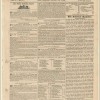
South Australia’s first newspaper was the South Australian gazette and colonial register, later titled the Register.
The tropics
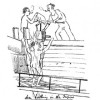
The ‘tropics’ is a band of calm weather around the equator where the trade winds of the north and south meet. This phenomenon, known universally by sailors as the ‘doldrums’,
Toilet facilities
Managing human waste on board ships was extremely important for the health of all on board. Regulations increasingly governed aspects of ship board life, but in 1836 they were yet to apply to all emigrant vessels, especially those chartered privately.
Treating Mrs Chandler
From the brief details we have it is impossible to do more than guess at the nature of Mrs Chandler’s illness. The John Pirie diarist tells us that she complained of pains in her head and her side and that she was behaving very erratically before throwing herself overboard.
Washing clothes
None of the fresh water was available for washing clothing or linen. Passengers either washed their clothing in sea water, generally only on one or two designated days each week (always weather permitting), or they gathered rain water in buckets or from the sails for washing.
Water provisions
As one of the key provisions needed to sustain life at sea, water had to be potable (drinkable) and portable (easy to store). Large casks or ‘butts’ of fresh water were brought on board as part of the initial provisions and stored in the hold.
Widows and widowers
In the 1830s it was assumed that all women would wish to marry. In fact they had little alternative, unless they were independently wealthy.
Share this page:
View journal extracts by ship:
View journal extracts by person:
Recent Comments
- Pam on Joseph and James Jones
- Allison on Africaine passenger list
- Allison on John Pirie
- Judith on John Pirie
- Don Hennig on Cygnet passenger list

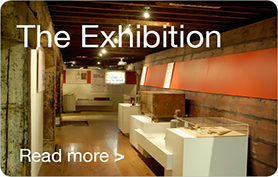

Thankyou,
as I am a decendant of Thomas Lipson, I found it very interesting
reading about the trip out from England.
Carmel cross
Hi,
its me again (#2) why did they do this voyage in the first place and why did children come on the voyage?
Hi Patrick
Thank you for your interesting questions. If you go to the ‘topics’ section in the website you will find information to help answer your questions. Stay tuned to coming weeks where we will explore food and navigation in more detail.
Mandi
Hi,
it,s me again, I was wondering how they knew where they were, wich way they were going and where australia was.
1.what food did the people on board the ship have to eat and how did it get there.
2.how long did it take to reach australia
Hi,
I have a considerable amount of info on the Broadbent family (Buffalo passenfers). If you are interested, where do I send it? It is in digital form, so I could email it.
Regards,
Brian Beck
Hi Brian,
I have sent you my email details. Did you also receive the email I sent through 3 weeks ago? If my emails are not getting through to you then please do not hesitate to call me at History SA. http://history.sa.gov.au/contacts.htm
regards, Kristy – History SA.